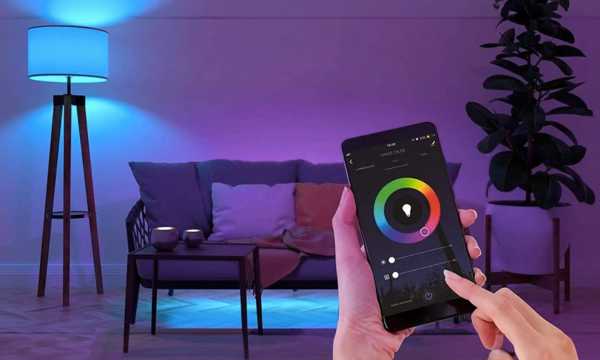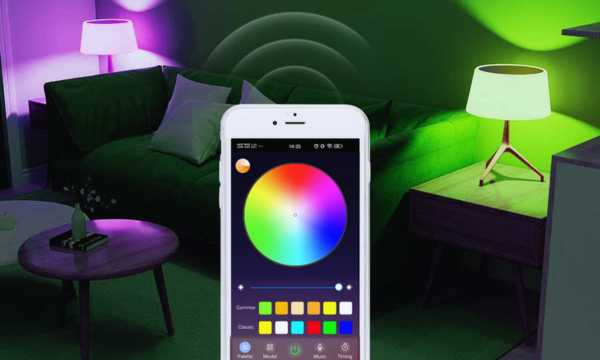Smart lighting can radically transform your workspace, making it more efficient and enjoyable.
Ad
In this article, we’ll explore how you can optimize your space using this innovative technology.
With smart lighting, not only do you improve the aesthetics of your office, but you also boost productivity.
Read on and discover how the right lighting can make all the difference in your daily routine.
Imagine being able to adjust the lighting in your workspace with a simple tap on your smartphone or even through voice commands.
Good lighting is important for health and well-being.
The right light can reduce eye strain, improve mood and even boost creativity.
Investing in smart lighting also improves employee well-being and productivity, creating a workplace where everyone feels motivated and inspired to do their best.
This is a change worth considering in any professional environment.
1. What is Smart Lighting and Why Invest in It?
Smart lighting refers to systems that allow you to adjust the light according to your needs and preferences.

Example of smart lighting (Source Google)
This includes remote control of lamps, intensity adjustments, and even color changes.
Investing in smart lighting is a great idea as it provides comfort and efficiency, while also helping to reduce energy costs.
Many companies are adopting this technology, and the reason is simple: well-lit environments contribute to employee well-being.
From creatives to analysts, everyone is more focused and energized when the space is tailored to their needs.
Just imagine how you’d feel working under light that matches your mood and task.
Another important point is sustainability. Smart lighting utilizes technologies like LED, which consumes less energy and has a longer lifespan.
In this way, you contribute to the environment while improving your workspace.
Finally, this technology is very accessible and easy to install, making it a viable choice for all types of environments, from home offices to large corporate offices.
2. Main Advantages of Smart Lighting at Work
Choosing smart lighting for your workspace comes with numerous advantages.
Here are some of the most impactful:
- Increase in Productivity: Well-lit environments promote focus and efficiency. When you control the lighting, you can create ideal conditions for each task.
- Personalization of Light: You can adjust the intensity and color of the light, adapting the environment to your preferences. This way, everyone can have their “perfect setup.”
- Energy Savings: With LED bulbs and automated systems, you reduce energy consumption and, consequently, your electricity bills.
- Ease of Control: With an app on your phone or smart assistants, controlling the lighting becomes an easy and quick task.
These advantages make smart lighting a smart choice for any workspace.

Example of Smart Lights Templates (Google Source)
3. Types of Lighting Systems for Offices
There are various types of lighting systems you can consider for your office.
Here are some of them:
- LED Lights: Known for their energy efficiency, these are a popular choice. They can be dimmed, allowing for adjustments as needed.
- Smart Lights: Equipped with Wi-Fi connectivity, these bulbs can be controlled via apps. Additionally, they have different lighting modes that change according to user activities.
- Presence Sensors: With these devices, the light turns on or off automatically depending on whether people are present in the environment. This helps save energy effectively.
- Voice Control: Systems integrated with voice assistants, like Alexa or Google Assistant, allow you to adjust the lighting simply with voice commands.
Each type of system has its own characteristics, so evaluate which one fits your needs best.
4. How to Choose the Ideal Lighting for Your Environment
Choosing the ideal lighting involves considering a few questions.
Here are some practical tips:
- Analyze the Space: Look at the most used areas. Open offices may need brighter light, while meeting rooms may prefer a more relaxed atmosphere.
- Think About Activities: Different tasks require different types of lighting. For reading, a more direct light is ideal, while creative work might inspire with varied colors.
- Consider Ergonomics: Good lighting should prevent eye strain. Place lamps to minimize shadows and glare.
- Test Before Finalizing: Whenever possible, do small tests with different intensities and colors of light. This can help you understand what works best for you and your team.
By following these tips, you’ll ensure a comfortable and efficient workspace.
5. How to Personalize Light for Each Moment of the Day
Personalizing lighting can make a significant difference in your routine.
Here’s how you can adjust the light at different times of the day:
- Morning: Prefer bright, white lights to energize your body and mind. This helps increase energy and focus.
- Afternoon: In the afternoon, consider warmer light. This change can be relaxing, helping to maintain calm as the day winds down.
- Evening: Softer and less intense lighting is ideal to wrap up your workday. This helps you relax and prepares your body for rest.
These small variations can make your day more productive and enjoyable.
6. Tips on Trends and Innovations in Smart Lighting for Your Office
Staying up-to-date with trends is essential to make the most of them.
Here are some innovations to consider:
- Circadian Lighting: This system simulates natural light throughout the day, helping to regulate the body’s circadian rhythm. This can promote better sleep quality and overall well-being.
- IoT Integration: Smart lighting is increasingly integrating with the Internet of Things, allowing for even greater and more convenient control of the environment.
- Interactive Environments: Some technologies allow lighting to adapt to the user’s mood, creating pleasant and dynamic environments.
- Sustainability: Opt for brands that use recyclable materials and sustainable practices in their bulb manufacturing.
- Customize Lighting Scenarios: Use lighting systems that allow you to create different, adjustable scenarios for different activities, such as meetings, individual work or relaxation.
These trends not only modernize the environment but also promote a healthier and more innovative workplace.
Conclusion
Adopting smart lighting in your workspace is a significant step toward efficiency and comfort.
With the various options available, personalizing your light has never been easier.
Remember that a well-lit space is not just about aesthetics; it’s also about productivity and well-being.
Experiment with the technologies discussed and see how smart lighting can transform your daily life.
Are you ready to make this change? Start today!



